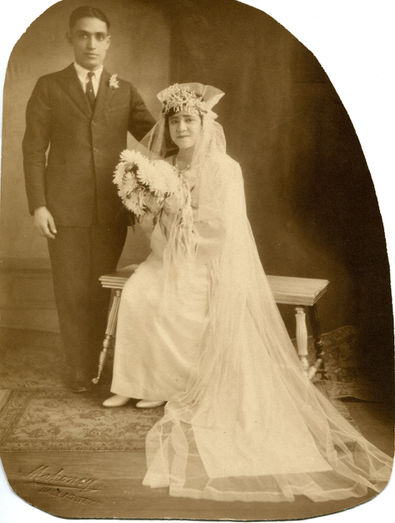.jpg)
America entered World War I on April 6, 1917. The war was the first time in American history that the United States sent soldiers abroad to defend foreign soil. In the Spring of 1918, the influenza virus was first identified among sick soldiers at Camp Funston at Fort Riley, an Army training center in Kansas. An emergency hospital was set up as the number of sick increased. As soldiers transferred to different bases across the country, the H1N1 deadly influenza A virus spread from Army bases to civilian areas. Soldiers carried the virus with them on crowded ships bound for Europe and spread it upon arrival.
The virus soon became a world-wide pandemic. Some say it actually began in France. Others claim it had its origin in Spain. Because Spain was a neutral country during the World War I, it reported regularly on the deadly influenza since news of the pandemic was not censored as with other countries. This led many to believe it began in Spain; thereby, referring to it as the Spanish Flu.
The pandemic and a world war collided in 1918. It exploded at a time of particular crisis in the war effort when the end to the war wasn’t clear. The Spanish Flu, traced to avian origins, infected one-third of the world’s population and killed upwards of 50 million. More than 2 million U.S. soldiers served overseas in the midst of what was called the greatest pandemic in world history. Many served in the American Expeditionary Forces (A.E.F.) fighting on the battlefields in France under the command of Major General John J. “Black Jack” Pershing. Tragically, the influenza pandemic, not battle, killed many of them.
At home, Army camps whose death tolls were routinely anywhere from 5% to as high as 30%, were shut down. Some were averaging about 100 deaths per day. Death was rapid for many, sometimes within 24 hours of onset. There were so many bodies and not enough coffins that some former soldiers said the horrific sight was worse than anything they had ever seen in battle in France. People didn’t want to let soldiers return home.
In Dallas the State Fair was cancelled and Camp Dick, allegedly named for John Dick, an Aviation Cadet who was killed in Love Field, was set up as an Army training camp. It was open from January 1918 to January 1919. When influenza cases spiked among the soldiers at Camp Dick, some were transferred to St. Paul's hospital which had erected 45 tents during the influenza pandemic. Dallas officials disregarded the warnings about increasing influenza cases and resumed normal activities and events such as the Liberty Loan parades to raise funds for the war effort. This push to normalcy led to a secondary spike in influenza cases which was more deadly than the first wave.
The government placed the war effort above all, including the truth. It was the first time the government tried to fully control the public, who were in a panic over the influenza pandemic. To maintain an air of normalcy, a communication campaign underplayed the pandemic by spreading intimidation and propaganda - misinformation, half-truths, or even out-right lies. Some intimidation was enforced by the law. As John Barry, historian and author, summarized, “A pandemic meets the propaganda machine.” If there are any lessons to be learned today from the last great pandemic of 1918 is a quote attributed to George Bernard Shaw, “what we learn from history is that we do not learn anything from history.”
World War I ended on November 11, 1918. The Spanish Flu Pandemic came to an end by the summer of 1919. The last of the five Dallas Mexican American WWI soldiers serving in WWI ended his military service in 1920.
On Veterans Day, 2020 DMAHL proudly salutes military service persons who have served their country and those serving today in the middle of another pandemic. And we honor Dallas’s five Mexican American WWI soldiers who served in the time of the twin horrors of two wars, two enemies.
DMAHL Board of Directors
Exhibit Creative Content Web Designer, Johnny Reyes
Exhibit Director, Rosemary Valtierra Hinojosa
Special thanks to Charles Castro, Exhibit flyer graphics designer

A colorized image of the 1918 virus taken by a transmission electron microscope (TEM). Its size is 80 to 120 nano meters in diameter.
Photo credit: C. Goldsmith- Public Health Image Library #11098

A ravaged lung (at the National Museum of Health & Medicine) from a U.S. soldier killed by the flu in 1918. (Cade Martin)

A grave for American victims of the virus in France. By the end of 1918, 57,000 American troops died from the flu compared to the 53,000 who died in battle.
(U.S. National Archives)
Guillermo (William) Suarez
U.S. Army, 1917 - 1919
Click arrows to view more images

Emergency hospital during influenza epidemic, Camp Funston at Fort Riley, Kansas. Site of first reported influenza case. (NCP1603)
AP photo/National Museum of Health
Manuel Hernandez
U.S. Army, 1917 - 1919
Click arrows to view more images


Victory Liberty Loan Parade in Dallas (Elm and Akard Street) in 1917, one of four parades held for the war effort.
DeGolyer Library, Southern Methodist University.

Jose María Padilla
U.S. Army, 1918 - 1919
Click images for details

Entrance to Camp Dick located in Fair Park, Dallas, Texas. Influenza cases spiked and tents were set up for the sick. Cadets were also transferred to St. Paul's Hospital. (University of Washington Libraries Special Collections Division)
John Valdez
U.S. Army, 1918 - 1919
Click arrows to view more images

Tents constructed at St. Paul's Hospital during the 1918 influenza pandemic.
(UT Southwestern Image Archives)




























